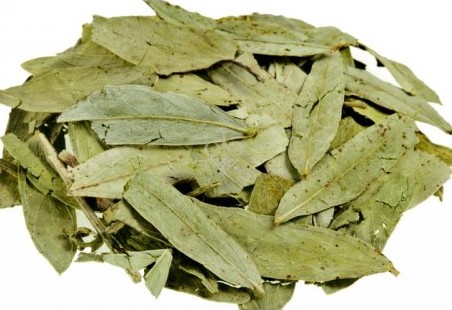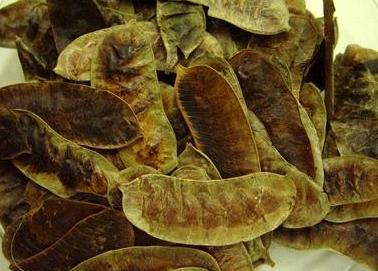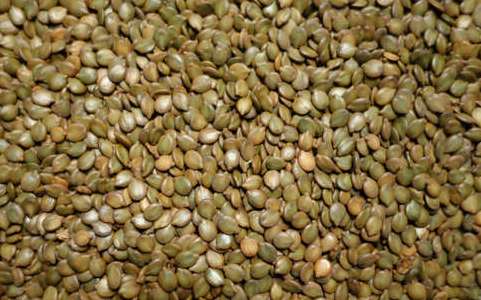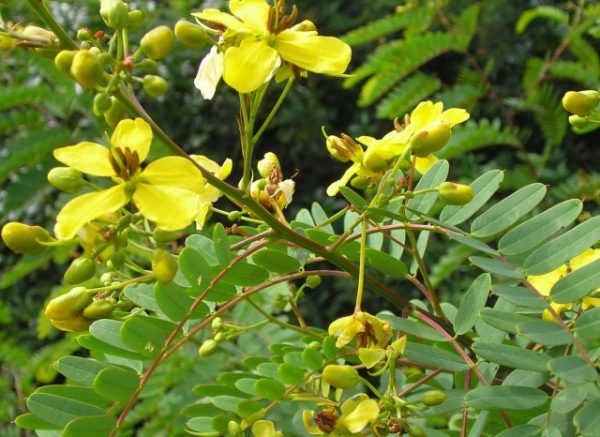Senna Plant Cultivation:
The following is all about Senna Plant Cultivation Practices.
Introduction to Senna Plant Cultivation
Senna is a medicinal herbal plant grown for its economic part of leaves and pods. We can see that there is a huge demand for traditional medicinal plants, especially in Asian countries. However, the Senna plant is distributed throughout India, Africa, Somalia, Sudan, Southern Arabia, and Yemen.
With proper cultivation practices and marketing, one can expect decent profits in Senna plant cultivation. In the following sections, let us discuss more how to grow the Senna plant from seed.
Profile of Senna Plant
- Botanical / Scientific Name of Senna: Cassia angustifolia Vahl.
- Kingdom: Plantae.
- Family: Caesalpiniaceae.
- Subfamily: Caesalpinioideae.
- Genus: Senna.
Senna Plant Description
Senna plant is a perennial herb that can reach a height of 3 to 6 feet. The stem of the Senna plant is erect and smooth with a pale green to light brown color. Generally, the leaves of this plant will have 4 to 8 pairs of leaflets. The flowers of the Senna plant are in yellowish color. The pods of the Senna plant measure about 6 to 8 cm long and 2 to 3 cm broad. The pods are in greenish to brownish color.
Common Names of Senna Plant
- Senna/ Tinnevelly senna – English.
- Sonamukhi, Sena ka patt – Hindi.
- Swarnpatri – Sanskrit.
- Nilavarai / Avuri – Tamil.
- Sonamukhi – Marathi.
- Sanapati / Sarnapatta – Punjabi.
- Sunamukhi – Telugu.
- Sonamukhi – Bengali.
- Mindhiaval, Sonamukhi – Gujarati.
- Sunamukhi – Oriya.
Parts Used for Medicinal Purpose or Economic Parts of Senna Plant
Senna plant leaves and pods are the main parts of medicinal use.


Medicinal Uses / Health Benefits of Senna
- Used to treat skin infections
- Good for hair health
- Helps in relieving constipation.
- Used as a great colon cleanser.
- Good for treatment of hemorrhoids.
- It is used to treat intestinal worms.
- Senna tea can be helpful for weight loss.
- Senna plant has antibacterial properties
- Can treat indigestion.
Caution: Never take this on your own, it may cause side effects. Consult primary care physician before taking any Senna herbal products.
Major Production States of Senna Plant
This herb is mainly cultivated in Southern India, especially in districts of Madurai, Ramanathapuram, Tiruchirapally, and Tinnevelly of Tamilnadu. However, the commercial cultivation of Senna is also being carried in the states of Maharashtra, Rajasthan, and Gujarat.
Varieties of Senna Plant
- ALFT-2.
- Sona.
- KKM (Se)1 (Suitable for rainfed conditions).
- Tinnevelly Senna.
Climate Requirement for Senna Plant Cultivation
Senna plants can be grown under rainfed conditions and very rarely with irrigated facilities. It requires good sunlight and occasional showers during its growth period. Avoid waterlogging conditions of the soil as this plant is very sensitive to water stagnation. It is a deep-rooted hardy plant that demands warm and dry conditions for optimal growth. Usually, on average 300 mm to 400 mm annual rainfall is good enough for an optimal yield of Senna plant leaves and pods.
Soil Requirement for Senna Plant Cultivation
Senna plants can be grown on a wide range of soils. However, the soils recommended for commercial cultivation of Senna are friable and well-drained sandy loam, red loams, coarse gravelly, and alluvial loams. This plant can tolerate the high salinity of the soil. For optimal growth, select soil with a pH value of 7.0 to 8.4. The Senna plant can also be grown in black cotton soils with good drainage.
Land / Field Preparation for Senna Plant Cultivation
If you are growing the Senna crop on large scale, it is not required to bring the soil to the finetilth stage but ensure the weed-free field. To remove any weeds, rocks, you can carry 1 ploughing and 2 harrowings followed by levelling. As we know this crop is sensitive to waterlogging, divide the field into suitable and convenient plot sizes with a considerable slope for water draining. To enrich the soil, 10 to 15 tonnes of well-decomposed farmyard manure like cow dung should be supplemented per hectare during the last ploughing of land.
Propagation and Seed Treatment in Senna Plant Cultivation

Propagation of Senna crop is done by seeds. As these seeds are hard-coated, they require 12 hours of soaking in the water for a good germination percentage. To prevent any seed-borne and soil-borne diseases, 1 kg of Senna seeds may be treated with 3 grams of Thiram before sowing in the field.
Seed Rate for Senna Plant Cultivation
Seed rate depends on variety and planting method.
- In case of rainfed condition = 25 kg/ha.
- In case of irrigated condition = 15 kg/ha.
- Line sowing (dibbling method) under irrigated condition = 6 to7 kg/ha.
Sowing Season of Senna Plant Cultivation

Generally, the first sowing of the Senna crop is advised from February to March, second crop sowing is advised from September to October.
Sowing Method in Senna Plant Cultivation
In Senna cultivation, the common method of sowing is broadcasting. However, in areas where line sowing with 45 cm x 30 cm row-to-row and plant-to-plant is produced excellent yield. The intercultural operation would be an easy in-line sowing method. For better germination, seeds should be placed at 1 to 2 cm depth. You can give light irrigation after sowing.
Read this: Growing Spirulina.
Irrigation in Senna Plant Cultivation
Generally, the Senna crop is grown under the rainfed condition and does not require any special irrigation. It is not recommended to grow this medicinal crop in areas where heavy rainfall is expected. In limited areas, this is cultivated under irrigated conditions. In such scenarios, make sure to provide first irrigation immediacy after sowing and subsequently after 3 to 4 weeks of sowing. Maintain uniform moisture conditions in the field and avoid over-irrigation.
Manure and Fertilizers in Senna Plant Cultivation
| Manure and Fertilizer Inputs | Quantity / Amounts |
| Well-decomposed farmyard manure (FMY) during land preparation. | 10 to 15 tonnes/ha |
| Nitrogen ‘N’ | 80 kg/ha |
| Phosphorus ‘P2O5’ | 40 kg/ha |
| Potash ‘K2O’ | 40 kg/ha |
Application of fertilizers: A full dose of ‘P2O5’, ‘K2O’, and 1/2 (half) dose of ‘N’ should be applied as basal. The remaining half ‘N’ should be applied in 2 equal split doses 1 is 3 months after sowing (after first leaf picking) and 2nd would be after 4 months of sowing (after second leaf picking).
Intercultural Operations in Senna Plant Cultivation
- Weeding: 1 to 2 weeding are required after 3 to 4 weeks of sowing.
- Hoeing: 1 hoeing operation can be carried after 3 to 4 weeks of sowing.
- Thinning: 1 thinning operation can be carried out after 3 to 4 weeks of sowing.
Pests and Diseases of Senna Plant Cultivation
- Leaf spot & red rot can be controlled by spraying Dithane Z-78 @ 0.02%
- Leaf eating Caterpillars & Brown spotted Caterpillars can be controlled by spraying Carbary 1 @ 2.0 to 2.5 grams/1 liter of water.
Harvesting in Senna Plant Cultivation
It takes 60 days Senna plant for the initial flower. Encourage plant growth by removing the first flush of flowering stalks. The first harvesting is generally carried out 3 months after sowing. Pluck the leaves whey they are fully grown, thick and bluish in color. Subsequently, a 2nd and 3rd harvesting should be carried 6 months and 7 months after sowing under irrigated conditions. Crop grown under irrigated conditions yield more than the crop is grown under rainfed condition. However, For a rainfed crop, cutting or uprooting of whole plants after 120 to 150 days is practiced for harvesting. The pods should be harvested picked before maturing to maintain greenish color. In the case of seed production, collect the pods when they turn a brown color.
Post-Harvesting in Senna Plant Cultivation
After harvesting the leaves, they should be dried under shade for 7 to 10 days. Before marketing, grading should be done based upon the size and color of leaves and pods. Dried leaves of the Senna crop should be packed in bales for storage.
Yield in Senna Plant Cultivation
The yield of the Senna crop depends on the soil, variety, planting method, and other cultivation practices.
| Type of crop | Senna leaf yield | Senna seed yield |
| Rainfed crop | 700 kg | 100 kg |
| Irrigated crop | 1500 to 2000 kg | 175 to 200 kg |
Marketing of Senna
The market price of Senna leaves is around 70 to 80 Rs/kg whereas Pods can be sold at 80 to 90 Rs /kg.
In case if you are interested in this: How To Grow Organic Lettuce.
- Economical Aquaculture: A Guide to Low-Budget Fish Farming
- 15 Common Planting Errors That Can Doom Your Fruit Trees
- How to Make Houseplants Bushy: Effective Tips and Ideas
- Innovative Strategies for Boosting Coconut Pollination and Yield
- Pollination Strategies for Maximum Pumpkin Yield
- The Complete Guide to Chicken Fattening: Strategies for Maximum Growth
- Natural Solutions for Tulip Problems: 100% Effective Remedies for Leaf and Bulb-Related Issues
- Revolutionizing Citrus Preservation: Towards a Healthier, Greener Future
- Natural Solutions for Peony Leaf and Flower Problems: 100% Effective Remedies
- Maximizing Profits with Avocado Contract Farming in India: A Comprehensive Guide
- Natural Solutions for Hydrangea Problems: 100% Effective Remedies for Leaf and Flowers
- The Ultimate Guide to Choosing the Perfect Foliage Friend: Bringing Life Indoors
- From Sunlight to Sustainability: 15 Ways to Use Solar Technology in Agriculture
- The Ultimate Guide to Dong Tao Chicken: Exploring from History to Raising
- The Eco-Friendly Makeover: How to Convert Your Unused Swimming Pool into a Fish Pond
- Mastering the Art of Delaware Chicken Farming: Essentials for Healthy Backyard Flocks
- 20 Best Homemade Fertilizers for Money Plant: DIY Recipes and Application Methods
- How to Craft a Comprehensive Free-Range Chicken Farming Business Plan
- Brighten Your Flock: Raising Easter Egger Chickens for Beauty and Bounty
- How to Optimize Your Poultry Egg Farm Business Plan with These Strategies
- Subsidy for Spirulina Cultivation: How Indian Government Schemes Encouraging Spirulina Farmers
- Ultimate Guide to Raising Dominique Chickens: Breeding, Feeding, Egg-Production, and Care
- Mastering the Art of Raising Jersey Giant Chickens: Care, Feeding, and More
- Ultimate Guide to Raising Legbar Chickens: Breeding, Farming Practices, Diet, Egg-Production
- How to Raise Welsummer Chickens: A Comprehensive Guide for Beginners
- How to Protect Indoor Plants in Winter: A Comprehensive Guide
- Ultimate Guide to Grow Bag Gardening: Tips, Tricks, and Planting Ideas for Urban Gardeners
I would like to contact farmers who are growing sonamukhi